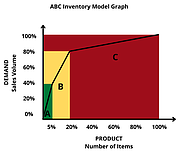Inventory management in a post-COVID economy

Samantha Dascomb
Financial crises are inevitable. On average, we experience an economic crisis of varying size and scale every seven years. During each crisis, industries experience financial impact, and supply chains experience disruption as consumers tighten their spending habits to the necessities while reducing luxury expenditures.
A snowball effect will occur for a small business without adequate inventory management, planning, processes, and systems.
The small business will experience:
1) A drop in demand that leads to high overstock.
2) A drop in value from businesses decreasing product prices to create an increase in demand.
3) A decrease in investments due to a reduction in cash flow, profits, and high-interest rates.
4) A decrease in cash flow/profit from cash tied up in stock and assets.
The result during a financial crisis for a small business without liquidity can be severe.
To mitigate and manage your small business during a financial crisis, it’s important to manage and maintain healthy inventory practices. There are three steps to maintaining healthy inventory management practices through financial crisis, Crisis Preparation, Flexibility During Crisis, and Acceleration Post Crisis. I'm going to focus on Crisis Preparation since it is the most crucial step that businesses can work on now as we enter economic uncertainty.
If you manage your inventory well, you will have the best chance to navigate any financial situation, including crisis. You will see where changes are occurring quickly and prepare for rapid readjustment based on customer needs and desires during a crisis.
The process for preparing your inventory for crisis:
1) Organize your inventory according to risk and demand uncertainty. The ABC inventory model is also known as the 20/80 rule. In the ABC model, A will be the 5% of your products that produce the top 40% of your sales volume. A+B will be 20% of your products producing 80% of your sales volume and the combination of A+B is about 20%. The remaining products are C. You focus your inventory stocking and maintenance on the A+B products as these are your profit producers.
If you use Shopify for your e-commerce platform, their latest update factors your ABC Volume. If you are not using Shopify, you will want to invest in a quality inventory management system that integrates with your selling platform or begin manually tracking and monitoring your inventory using Excel/spreadsheet software.
2) Reduce Your Inventory Level and Generate Cash Flow. Clear your inventory of all products that are old, obsolete, dormant, or outdated. Think of products with expiration dates, updated yearly, and other products where customers expect current models.
3) Have Fewer Products in Your Catalog. Eliminate those that are not essential, low in turnover, or not relevant to your overall business plan. Think of products that haven’t moved in 3 months, or you’ve only sold 1 or 2 in 6 months. These products aren’t relevant or in demand for your clients.
4) Shorten Supply Times to Increase Mobility, Flexibility, and Cash Flow. In many cases, we have practiced Just-In-Time ordering with longer lead times (3 months or more) to maximize the potential profits of large bulk order discounts. While this is great in markets that are heating up, this can cause many products to sit on your shelves unsold if the market demand shifts. This also reduces your cash flow. As an alternative, you will want to reduce the lead times to 3-months or less, and ideally, 1-month, to stay flexible with your pricing, product availability, and customer needs.
5) Create, Manage, and Maintain Sales and Purchasing Forecasts. An inventory and sales forecast gives you the trends in your business and helps you allocate costs for future needs. It also allows you to see when the market is shifting in your business and will enable you to begin adjusting early and rapidly to meet new consumer demand.
6) Watch Market Signals for Economic Shifts. Bottom line, Know Your Market! Use your forecasts to adjust to market changes quickly. By monitoring your market segment, you stay ahead of market trends and ahead of your competitors when a crisis occurs.
The time invested in healthy, inventory management crisis preparation will be invaluable for the futureproofing of your business. The benefits you will gain will last you through all economic situations. You will have the ability to shift focus rapidly based on a decrease in demand and/or value, and increase your asset maintenance while decreasing your asset investments. Additionally, you will be more competitive in your market by gaining a larger market share with cash flow and profits, as well as able to recruit and maintain high-quality employees. Overall, you will have a healthier business prepared to weather all conditions.
The North Idaho Business Development Center helps small businesses thrive and achieve maximum potential in all economic situations. With no-cost coaching, seminars, and webinars you can take your business to the next level. To learn how to maximize your inventory and sales for an uncertain economic environment, contact North Idaho Small Business Development Center to schedule your free and confidential coaching session.
• • •
Samantha Dascomb is an eCommerce Business coach with NISBDC specializing in conversion rate optimization, customer engagement, web design, eCommerce and analytics.











